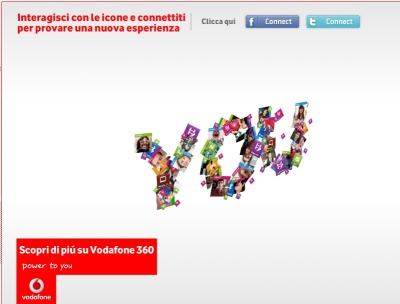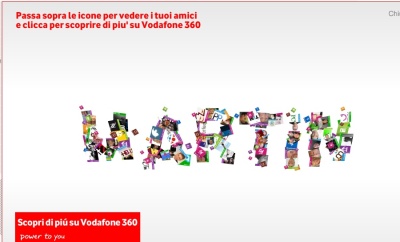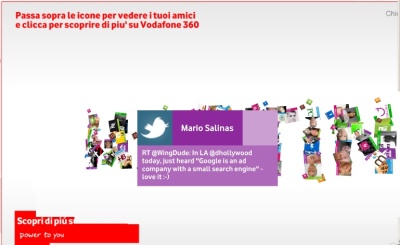The Evolution of the Engagement Economy
 Talking about new trends on the social web, marketers always love the point of view when brands are involved. They love to negotiate, as I call it, on the “cost per engagement (cpe)” level. Businesses and their communication suppliers always try to get customers engaged in brands. Some years ago, this was difficult. Now, it seems easy. And this topic becomes even more relevant for future marketing strategies when you think about today’s engagement economy.
Talking about new trends on the social web, marketers always love the point of view when brands are involved. They love to negotiate, as I call it, on the “cost per engagement (cpe)” level. Businesses and their communication suppliers always try to get customers engaged in brands. Some years ago, this was difficult. Now, it seems easy. And this topic becomes even more relevant for future marketing strategies when you think about today’s engagement economy.
The engagement economy nowadays is doing things companies never thought would happen: There are people forwarding brand videos (which generate massive engagement), admitting to be emotionally involved in brands. We’ve got people publicly telling their peers how much they love products, services or companies. And then there are people discussing about products and how they would change these products and services in order to make them more profitable for the manufacturer. This is all happening right up to the point where people are basically saying “I am a brand maniac of…” – fantastic and unbelievable in one go, right?
So, if we take a look back and analyze this trend from a long-term web-strategic point of view, companies need to rethink the future of their web-marketing efforts as the social web transforms the value of processes in sales and marketing.
At an event last week a marketer I know quite well took me aside and asked: “Why are people not as engaged when clicking banners as they are when becoming fans or followers of brands on the social web?” And my first reaction was to give a shrug. But then I realized the huge potential of the thought and I said: “Gimme some days and I will try to blog an answer.”
 In my view, a major part of the explanation to this phenomenon lies in the evolutionary process of the engagement economy and their brand commitment when people even want to become social VIPs or brand-vangelists and accept the ads from their favorite brands in their social graphs.
In my view, a major part of the explanation to this phenomenon lies in the evolutionary process of the engagement economy and their brand commitment when people even want to become social VIPs or brand-vangelists and accept the ads from their favorite brands in their social graphs.
Emotions
The emotional-impact of banner advertising and of “social media engagement” is completely different – on those who ‘follow’ the people that click on traditional advertising (display or affiliate) and on those who become fans or followers.
Somebody who clicks a banner ad is not engaged in any kind of brand emotionality: This person is just interested in the offer or the message that grins in his face saying: “I am nice, ain’t I?!” So, why not take a glance at the offer (especially when coupons or incentives are involved) as it is a short-term sales boost via email or some other traditional online advertising format. The person who is clicking on a fan page wants to know more about the brand values, why people have become fans, who they are. This is someone who wants to give some kind of emotional kick back to the brand and the “engaged brand peers”. And just by becoming a fan, they give the brands more positive rewards than they probably realize – kind of like an ultimate pay back which has never existed in that form or to that extent before.
Action
People who participate in banner advertising come from the passive “lean-back economy”. Some experts are already wondering, if banners are dying. My answer is: No, as banners follow a different purpose than the social web marketing activity! The benefit for traditional online advertising is the click, resulting in the quick consumption of news and information. The engagement economy loves to lean forward and get in the driver seat of the brand communication and discussion. Emotionally motivated by the sweet feeling of competence, this engaged person argues about the good and bad of the brand values. When you look at Nespresso and Starbucks social media activities and other impressive examples on Facebook or Twitter, or you take the latest example of the IKEA Facebook campaign all what companies are doing is throwing some communication crums in. And the fans “crowd together” and pick them up with greedy brand enthusiasm. They give the companies and their peers input and feedback with comments, questions and by sharing the brand content and ideas. The emotions get their pay-off by little brand incentives and keep the wheels of engagement buzz turning.
Time
Think about how much time people spend with a brand when clicking on a banner versus being on a fan page. A banner is meant to save time – as does an offer – just by its intention and nature, as well as the message it carries. Check the offer and then be off as quick as possible. Is this the way a banner works? I think so. Rate this short interaction against the time of a brand experience on a fan page. People listen, learn and participate in the conversation about the brand, and come back to see how the communication proceeds. Not because a banner asks for their time to do so, but as the people want it themselves. The customer is the active part of the brand communication, not the company. The customer pays attention to the brand and donates “engagement time” as the new value or ROI for all brand communication efforts.
And then, why do they stay longer on a fan page? The answer is easy: Their “brand friends” are there. They feel to be in good company and this is what builds comfort, driven by a “warm feeling of friendship, networking and community”. You are not alone, you have something in common just by spending time on the same topic: a brand commitment.
Spot On!
The engagement economy is in charge of brand communication and brand commitment. The company still owns it but they are being managed by engaged brand fans. Now, my question to you: Is this true? What is your experience and your strategy when working with this new engagement economy?

 How important it is to have a clear cut goal with your social media strategy shows an interesting auto comparison by
How important it is to have a clear cut goal with your social media strategy shows an interesting auto comparison by  Facing the pure intention of social media versus advertising, we have to admit that we are talking about an antithesis – no matter if you can book advertising on a social networks or not. Social Media is conversations while advertising is the monologue from company to customer. And in between lies some undefined (or shall we say unqualified) customer dialogue that we have been through for years of online advertising.
Facing the pure intention of social media versus advertising, we have to admit that we are talking about an antithesis – no matter if you can book advertising on a social networks or not. Social Media is conversations while advertising is the monologue from company to customer. And in between lies some undefined (or shall we say unqualified) customer dialogue that we have been through for years of online advertising.

